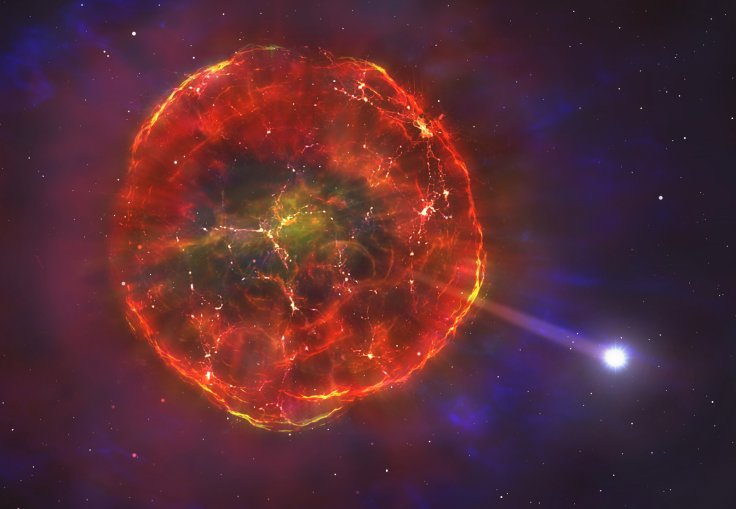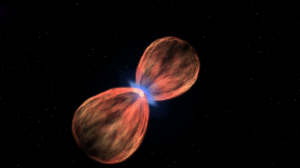Astronomers discovered that a star was fiercely hurtling across the Milky Way at a very high speed that they concluded it was likely ejected after an unusual supernova event. Nicknamed 'Dox,' it is a white dwarf 1,430 light-years away from earth and was discovered in 2015.
The star, referred as SDSS J1240+6710, is right now whizzing past 250 kilometers per second against the direction of the galaxy's rotation. But there's something more strange.
Dox has a chemical composition that is very unusual and made astronomers predict that it was kicked out in a high-velocity by such a supernova explosion not witnessed before, according to the research published in the Monthly Notices of the Royal Astronomical Society.

What Happened to Dox
When Dox was discovered at 40 percent of the solar mass, further analysis revealed that it had an atmosphere with pure oxygen, along with trace amounts of magnesium, neon, and silicon - but without any trace of hydrogen or helium.
This obviously warranted a closer look, so a team of astronomers led by physicist Boris Gänsicke of the University of Warwick in the UK took spectroscopic observations, using the Hubble Space Telescope.
Further research showed that the strange star also had in its atmosphere some traces of carbon, sodium, and aluminum -- elements that are produced during initial thermonuclear reactions in a supernova explosion.
Missing Elements
But as a supernova explodes, in its later stages heavier 'iron group' elements like iron, nickel, chromium, and manganese will be generated, but these were missing in Dox. Researchers say it's like a supernova started up, then died out.
But as the team calculated the star's velocity of how fast it was whizzing across the galaxy, the puzzle was solved.

Lead author of the study Prof. Gaensicke explained in a statement that Dox was unique despite all the features of a white dwarf because of its very high velocity and unusual abundances that did not make sense when combined with its low mass.
Ejected Out of a Binary Star System
It's chemical composition characteristic of nuclear burning, a low mass, and a very high velocity should "imply that it must have come from some kind of close binary system and it must have undergone thermonuclear ignition. It would have been a type of supernova, but of a kind that we haven't seen before," he said.
Binary pairs are locked up stars in mutual orbit, which can lead to a white dwarf supernova called 'Type Ia' supernova. The research team believes the thermonuclear ignition and mass ejection from a companion star was enough to put them off the binary orbit and "both stars would have been carried off in opposite directions at their orbital velocities in a kind of slingshot maneuver," leading to such a high velocity of Dox.
In this case, it could be a partial supernova with a brief flash -- an easy-to-miss event in the sky.









